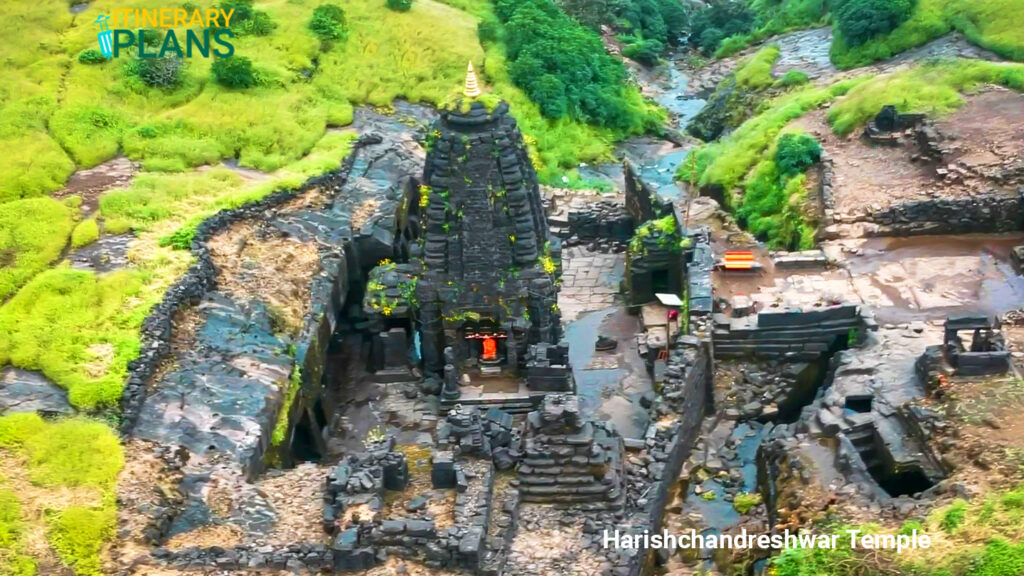Harishchandreshwar Temple is one of the most important landmarks on the Harishchandragad fort in Maharashtra. Located close to Ahmednagar and not too far from Pune and Mumbai, the temple is a special place for both pilgrims and trekkers. Dedicated to Lord Shiva, it is known for its stone-carved structure, peaceful atmosphere, and ancient history that goes back centuries.
In this guide, you’ll find everything you need — from travel routes and tips to nearby attractions and best times to visit — so you can plan your trip with ease.
Table of Contents
Overview of Harishchandrashwar Temple
- Location: Harishchandragad Fort, Ahmednagar district, Maharashtra, India
- Religion: Hinduism
- Deity: Lord Shiva
- Construction: 12th century
- Architectural style: Hemadpanthi
- Significance: One of the most important pilgrimage sites for Hindus in Maharashtra
- Unique features: The temple is carved out of a single rock and is known for its intricate carvings. It is also one of the few temples in India that is dedicated to Lord Shiva in his Harishchandra form.
Map
History
The Raja Harishchandreshwar Temple is thought to have been built around 600, when the Kalchuri family was in charge. Still, the temple’s design is similar to that of some North Indian shrines in some ways. The caves next to them were built much later, probably in the eleventh century. In the temple, you can find proof of the great sage “Changdev,” who wrote the tale Tatvasaar. Some people think that he meditated here in the 1400s. On the left side of the door to the temple, there is writing about the saint Devsnagsri.
If you’re interested in exploring similar spiritual destinations, you can also plan a trip to the ancient Raireshwar Temple, another important spot in the Sahyadris.
When is the best time to visit Harishchandragad Temple?
Post-monsoon season (October to February)
The post-monsoon season is the most popular time to visit Harishchandragad Shiva Temple, and for good reason. The weather is pleasant and sunny, with temperatures ranging from 15°C to 25°C. The lush greenery and waterfalls make it a photographer’s paradise. However, it is also the peak season, so expect crowds, especially on weekends.
Summer (March to June)
The summer season is not the most popular time to visit Harishchandragad Temple, as the weather can be hot and dry. The crowds are much smaller, and the temperatures are not as oppressive as they can be in the plains.
Monsoon season (July to September)
During the monsoon season, it is challenging to visit Harishchandragad Temple, as the trails are slippery and there is a risk of landslides. However, it is also a beautiful time to visit, as the waterfalls are at their peak, and the scenery is lush and green.
2 Days Itinerary for visiting Harishchandreshwar Temple
The First Day: Harishchandreshwar Temple
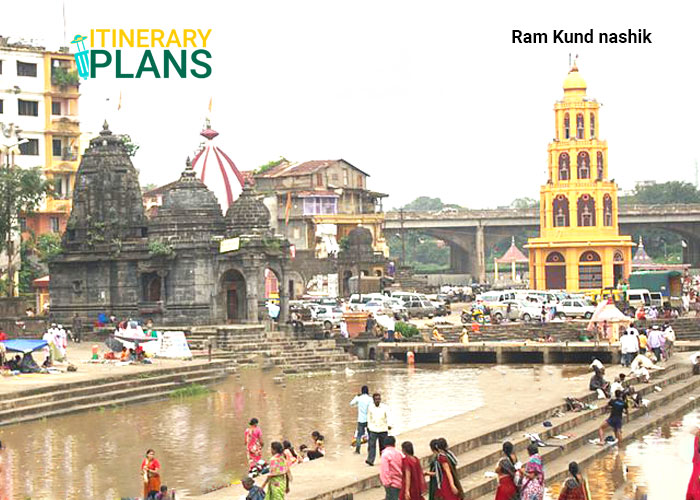
- Morning: Start your day with a visit to the Harishchandreshwar Temple, one of the 12 Jyotirlingas. The temple is located in a serene setting on the banks of the Pravara River.
- Lunch: After visiting the temple, take a break for lunch at one of the many restaurants near the temple.
- Afternoon: In the afternoon, visit the nearby Ram Kund, a sacred water tank. Legend has it that Lord Rama took a bath in this tank.
- Evening: In the evening, enjoy a boat ride on the Pravara River
- Where to break: Take a break for snacks and drinks at one of the many stalls near the temple.
- Where to spend the night: There are many hotels and guesthouses near the temple
2nd Day: Mamleshwar Temple
- Morning: In the morning, visit the Mamleshwar Temple, another ancient temple located in a cave
- Lunch: After visiting the temple, take a break for lunch at one of the many restaurants near the temple.
- Afternoon: In the afternoon, visit the nearby Pandavleni Caves, a group of 22 rock-cut caves.
- Evening: Enjoy a sunset view from the top of Harishchandreshwarl in the evening.
- Where to break: Take a break for snacks and drinks at one of the many stalls near the caves.
- Where to spend the night: Many hotels and guesthouses are near the caves.
How to Reach Harishchandreshwar Temple
Harishchandreshwar Temple is located in the Ahmednagar district of Maharashtra, India, on the Ahmednagar-Kalyan road. The temple is a part of the Harishchandragad fort, known for its historical significance and scenic beauty. Here are the general directions to reach Harishchandreshwar Temple:
1. By Air:
The nearest airport is Chhatrapati Shivaji Maharaj International Airport in Mumbai, which is well-connected to major cities in India and worldwide. You can hire a taxi from the airport or use public transportation to reach the base village of the fort.
2. By Train:
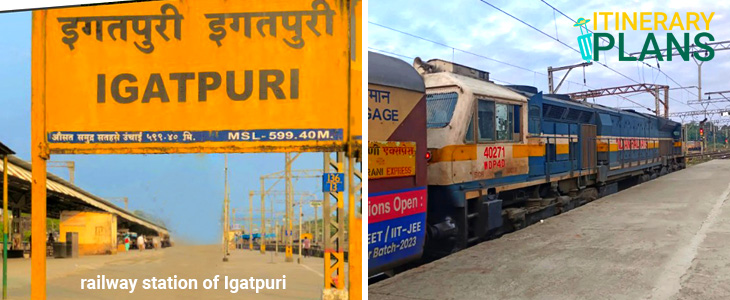
The nearest railway station is Igatpuri, which is well-connected to major cities in Maharashtra and other parts of India. From Igatpuri, you can hire a taxi or take a bus to reach the base village of Harishchandragad.
3. By Road:
From Mumbai:
- Take the NH160 or NH61 and head towards Kalyan.
- From Kalyan, take the Murbad-Karjat road.
- Reach the base village of the fort, usually Khireshwar or Pachnai, depending on the trek route you choose.
From Pune:
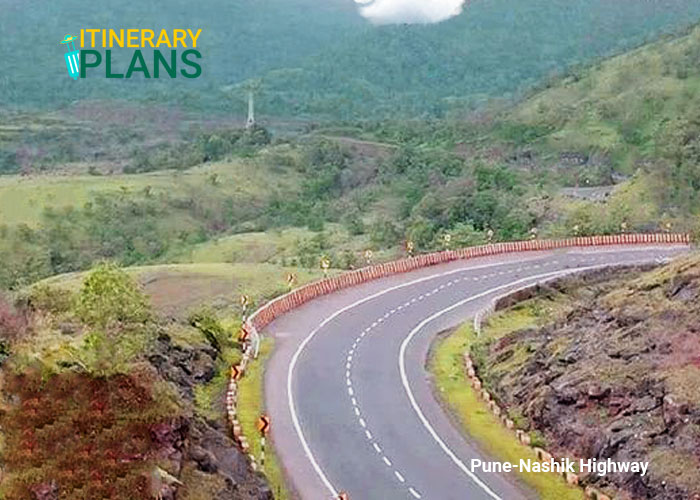
- Take the Pune-Nashik Highway (NH60) and head towards Alephata.
- From Alephata, take the road towards Malshej Ghat.
- Reach the base village, as mentioned above.
Local transportation from Base Village:
- Once you reach the base village, you can start the trek to Harishchandragad. The trek involves moderate difficulty, and multiple routes exist to reach the top.
- You can hire a local guide if you are unfamiliar with the trekking path.
Trek Routes:
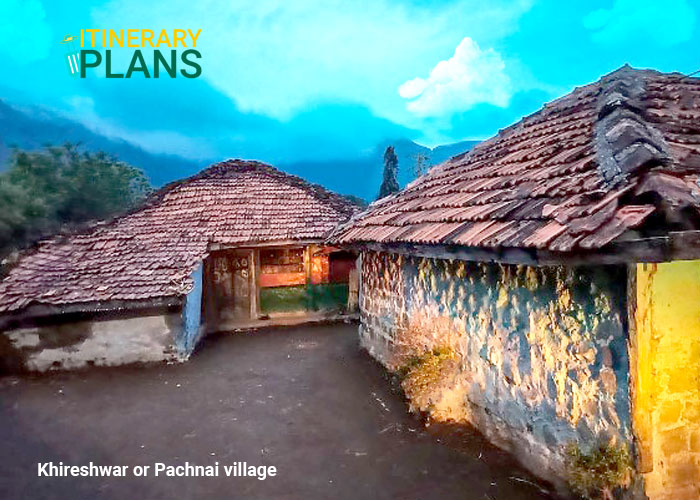
There are different trek routes, commonly starting from Khireshwar or Pachnai villages. The trek takes a few hours, depending on your chosen path and pace.
Remember to check local conditions and weather before your trip, and it’s a good idea to let someone know your plans. Also, bring essential supplies for a safe and enjoyable trek.
If you are traveling from Pune, you can even plan a relaxing break at a One Day Resort near Pune. For those coming from Mumbai, Camping in Alibaug is another fun addition to your trip.
Tips for Harishchandreshwar Temple visitors
The temple is a popular destination for trekkers and pilgrims visiting the nearby Saptatirtha Lake and the Konkan Kada cliff. Let’s know some important tips:
- Be prepared for a trek: The temple is at the top of a hill, and the only way to get there is to trek. The trek is about 6 kilometers long and can take 2 to 4 hours to complete. Bring a lot of water and shoes that are easy to walk in.
- Start early: The temple is most crowded in the mornings and evenings. If you want to avoid the crowds, start your trek early in the morning.
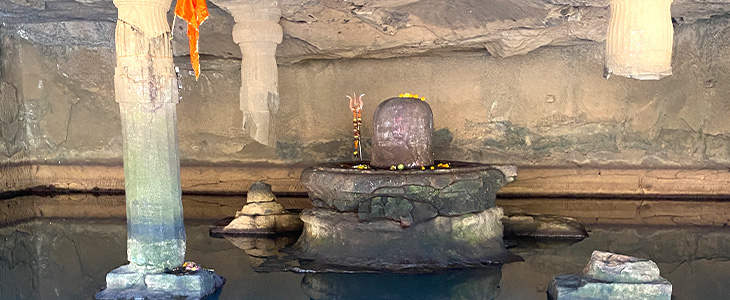
- Carry your food and water: There are no shops or restaurants near the temple, so pack your snacks and drinks.
- Respect religious customs: The Harishchandreshwar Temple is a Hindu holy place. Before going into the temple, make sure you dress properly and take off your shoes.
- Enjoy the view: The view from the top of the hill is worth the trek.
Things to Do Around Harishchandrashwar Temple
The temple is a hub for both pilgrims and trekkers. Once you’re here, you can extend your trip to several nearby attractions:
For Trekking Enthusiasts
Harishchandragad Trek
One of the most famous treks in Maharashtra, the Harishchandragad Trek takes you through ancient caves, rugged cliffs, and the iconic Konkan Kada viewpoint. Pairing this with a visit to Harishchandrashwar Temple makes for a complete spiritual and adventure-filled experience.
Sudhagad Fort
Known as the “Bhairavgad of the Sahyadris,” Sudhagad Fort offers panoramic views and historical significance. It’s an ideal one-day hike for those who want a mix of heritage and natural beauty.
Harihar Fort Trek
The Harihar Fort Trek is a thrilling climb featuring iconic near-vertical rock-cut steps. It’s a rewarding challenge for seasoned trekkers and offers breathtaking views of Nashik’s landscapes.
Sarasgad Fort
Sitting near Pali village, Sarasgad Fort is a relatively easy trek and provides sweeping views of surrounding mountains. It’s a good option for those who want a short yet scenic outing.
Jivdhan Fort
Located near Naneghat, Jivdhan Fort is a trekker’s delight with steep climbs, historical caves, and unmatched valley views. It’s a perfect addition if you’re exploring forts around Junnar.
Irshalgad Fort Trek
A lesser-known gem, the Irshalgad Fort Trek is ideal for beginners looking for a short and scenic adventure. The conical pinnacle of the fort makes it a popular spot for photography.
For Nature Lovers
Garbett Plateau
Overlooking the scenic Matheran region, Garbett Plateau is a vast stretch of lush green fields, waterfalls, and peaceful trekking trails. It’s perfect for monsoon and winter explorations.
Devkund Waterfall Trek
Hidden deep in the forests of Bhira, Devkund Waterfall is a stunning plunge pool that attracts trekkers and nature lovers alike. The crystal-clear waters make it an excellent monsoon destination.
Kalu Waterfall Trek
Among the tallest waterfalls in Maharashtra, the Kalu Waterfall trek is a feast for the eyes, especially during monsoon. The misty trails and dramatic cascades make it a photographer’s paradise.
Alang Madan Kulang (AMK)
Famous for being one of the most challenging treks in the Sahyadris, AMK offers thrilling climbs, rocky patches, and stunning views from its triple forts. It’s best suited for experienced trekkers.
Anjaneri Fort
Believed to be the birthplace of Lord Hanuman, Anjaneri Fort combines mythology and trekking. The serene plateau and caves make it a great spiritual and natural escape.
Sondai Fort
A small yet rewarding trek near Karjat, Sondai Fort is known for its watchtower-like peak and panoramic views. It’s a short adventure that’s family-friendly and scenic.
Vasota Trek
Located deep in the Koyna Wildlife Sanctuary, Vasota Trek offers a blend of wilderness, history, and breathtaking Sahyadri views. It’s an offbeat adventure for true nature lovers.
This makes Harishchandrashwar Temple not just a place of worship but also a gateway to trekking, forts, and hidden gems in the Western Ghats.
FAQ’s Of Harishchandreshwar Temple
Q: What is the significance of the Harishchandreshwar Temple?
A: The temple holds immense religious and historical significance. As mentioned in the Skanda Purana, it’s considered one of the most important pilgrimage sites for devotees of Lord Shiva.
Q: What is the architectural style of the temple?
A: Carved out of a single massive rock, the temple showcases the Chalukya dynasty’s architectural prowess. Its intricate carvings, sculptures, and pillars narrate ancient stories and depict various Hindu deities.
Q: What are the timings for darshan (seeing the deity)?
A: The temple is open from 5:00 a.m. to 9:00 p.m. for darshan. However, specific timings for pujas and rituals may vary.
Q: Are there any festivals associated with the temple?
A: Several festivals are celebrated here, including Mahashivaratri, Shravani Somvar, and Nag Panchami, attracting many devotees.
Q: Can I stay overnight near the temple?
A: Several guesthouses and lodges are available near the temple base village, offering comfortable accommodations.
Q: Is there a trekking route to reach the temple?
A: Absolutely! The adventurous climb to the temple through the scenic Sahyadri ranges is a popular attraction, offering stunning views of the surrounding valleys.
Q: What are the difficulty levels of the trekking routes?
A: There are two main routes: the Narayan Peth (moderate) and the Taramati Peak (challenging).
Q: Are there any safety Measure I should take while trekking?
A: Wear proper shoes, carry sufficient water and snacks, know your surroundings, and avoid trekking during bad weather.
Q: Can I offer any special prayers or pujas at the temple?
A: Yes, you can perform various pujas like abhisheka (sacred bath) for the lingam, archana (offering of flowers), or homa (fire ritual) for specific blessings.
Q: Is there a mandatory dress to follow when visiting the temple?
A: While there’s no strict dress code, modest attire that respects religious sensibilities is recommended. Avoid revealing clothing and opt for comfortable footwear for climbing

